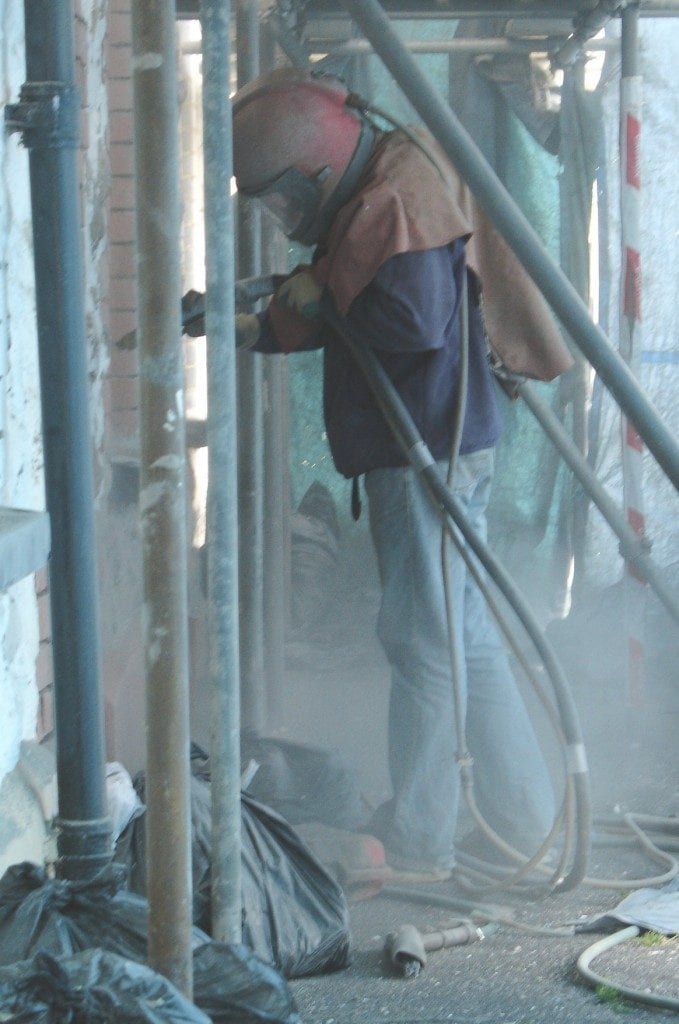These costs and risks get passed directly on to property owners and managers, and with the June 2016 addition to the OSHA rules, we have yet another material to add to our list: Crystalline Silica. Here’s what property owners, managers, and lenders need to know to manage the risks associated with silica.
About Silica
 Silica is a natural compound found in quartz, sandstone, and other rocks. It is hard, unreactive, and colorless. In its inert form, it is harmless and beneficial as a component of materials necessary to modern construction—concrete and stone being chief among them.
Silica is a natural compound found in quartz, sandstone, and other rocks. It is hard, unreactive, and colorless. In its inert form, it is harmless and beneficial as a component of materials necessary to modern construction—concrete and stone being chief among them.
However, when disturbed by construction activities, the resulting silica dust can be dangerous to anyone who breathes it in. OSHA estimates that approximately 2.3 million workers are exposed to respirable silica in their workplaces, including 2 million construction workers and 300,000 others.
Silica is primarily disturbed when materials such as concrete and stone are drilled, cut, crushed, or ground.
History of Silica Regulation
The hazards of crystalline silica for workers have been recognized since the 1930s, when the US Department of Labor took note of a wave of worker deaths. In 1971, when OSHA was created, the agency set a standard to limit worker exposure. However, the standard did not adequately protect workers, nor did it stay up to date with new industries that created exposure.
Responsible contractors have been protecting workers from silica for years despite the lack of adequate industry standards, controlling dust with water and vacuum systems. However, due to the lack of adequate regulatory standards, application of these widely available control tools has been inconsistent across the industry, with considerable confusion as to what exactly is required.
In September 2013, following a review of evidence, standards, and stakeholder input, a new OSHA standard was proposed and extensively reviewed. That standard is approved to go into effect on June 23, 2016.
The Silica Ruling
The OSHA ruling sets the permissible exposure limit (PEL) for respirable crystalline silica to 50 micrograms per cubic meter of air, averaged over an 8-hour shift. Unlike rulings on asbestos and lead, the rule does not specify strict guidelines for accomplishing the reduction, but it does require employers to use engineering controls (water or ventilation), provide respirators when necessary, limit worker access to exposure areas, develop a written exposure control plan, offer medical exams to exposed workers, and train workers on silica risks and methods for limiting exposure.
The ruling goes into effect on June 23, 2016, and provides construction companies one year within which to comply (other industries, such as fracking and brickmaking, have alternate schedules).
How the Ruling Impacts Property Owners
Property owners are unlikely to see an immediate impact from the ruling, but that doesn’t mean they don’t need to understand their responsibility. Like asbestos and lead, property owners and managers are required to disclose any known presence of silica-containing materials before engaging a contractor to provide renovation services. They should also be aware that the presence of silica-containing materials may increase the cost of renovations, due to the contractor’s cost in mitigating the risk to workers.
It’s also important to know that silica dust presents a potential hazard to any occupants of the building where renovations are ongoing, as well as adjacent properties, which may or may not be owned by the same entities. In this latter case, it is the property owner’s responsibility to communicate with the adjacent properties and to ensure that the contractor provides appropriate mitigation.
Impact on Lenders
While the legal responsibility lies on contractors to meet the silica ruling, the new standard will have an impact on lenders. The requirement to mitigate silica dust comes with costs that will be passed on to owners with the cost of renovations. Lenders who plan to finance renovations or purchases requiring renovation should be aware that the presence of silica-containing materials, especially in areas in need of immediate renovation, will increase ownership costs.






